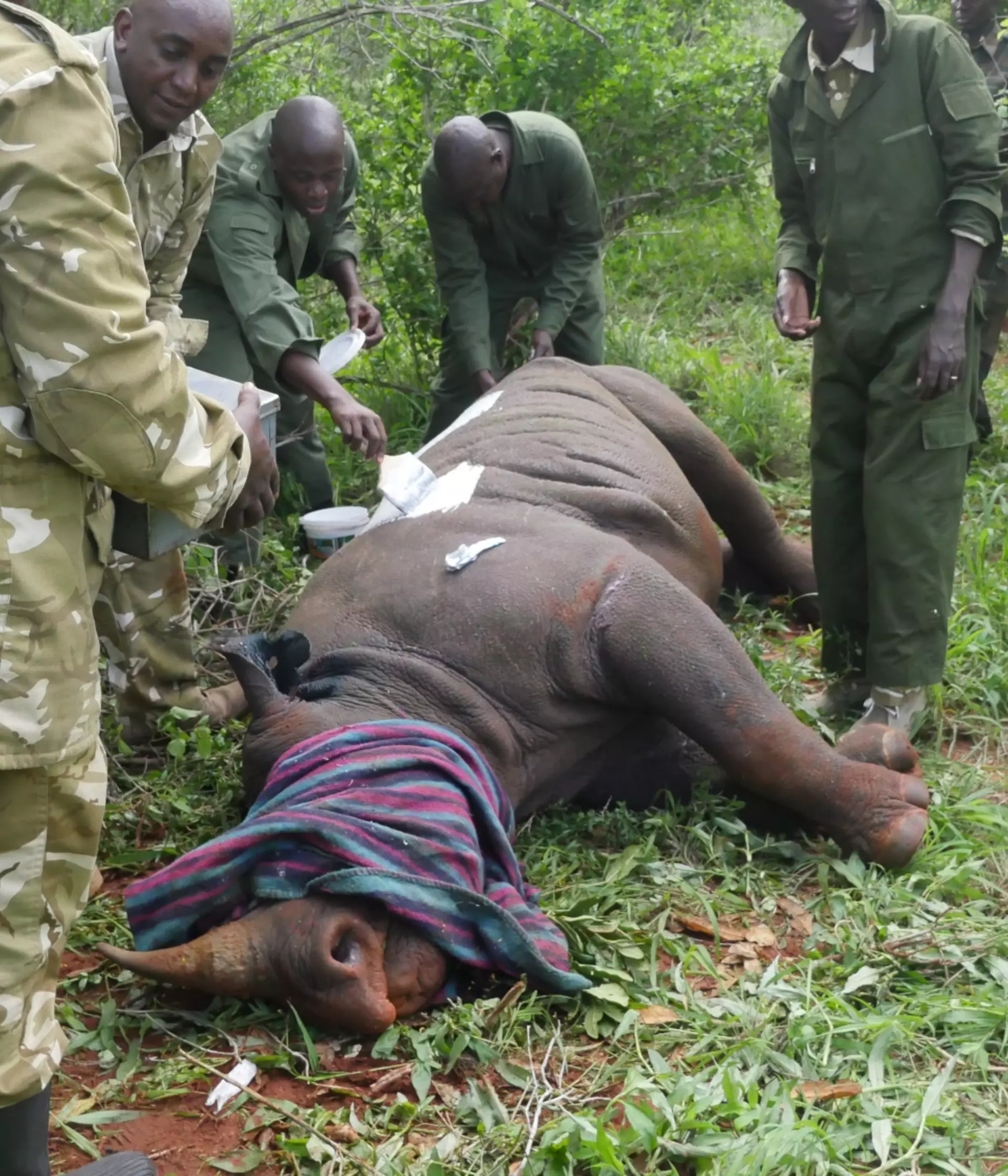Protecting black rhinos in Kenya
Inserting a tiny tracker into the horn of a rhino could save its life and protect others. But how do you get up-close to a one-tonne rhino that doesn’t want to be found? ZSL conservationist Moses Wekesa explains...
Black rhinos are shy giants. Unlike the larger white rhino, they prefer the thick bush to the open savannah, and keeping an eye on them is a tough job. But with just 5,000 black rhinos left in Africa, and a single rhino horn worth up to £500,000 on the black market, protecting every individual from poachers is more important than ever.
In Tsavo West, the Kenyan national park where ZSL is based, we work alongside the Kenya Wildlife Service, the national agency tasked with protecting the country’s animals. It’s our job to help them to get that done in Tsavo – from providing and maintaining their four-wheel-drive vehicles to organising training in the latest technology. In the fight against poachers, staying one step ahead of the curve with new technology is the key to success, and inserting a small GPS transmitter into a rhino’s horn is one way that we’re trying to keep them safe.
Rhino helicopter tracking
The day begins with two spotter planes, which fly over the park scouring the landscape for black rhinos. The ground is dense with trees and bushes, with occasional open areas tinged brick-red with Kenya’s characteristic soil. The spotter pilots are looking for specific individuals – the dominant rhinos, chosen before the operation, because they are known to roam far and wide. Rhinos fitted with a tracker can lead us to other rhinos at waterholes or foraging for food in similar areas, making it easier to monitor the entire population.
The team also uses a helicopter, carrying a vet who will anaesthetise the rhino so that the tracker can be fitted. Once the right rhino is located, the helicopter will move in and the vet will prepare the tranquilliser. The helicopter flies in low, hovering just above the grass and herding the rhino towards open ground before the vet fires the tranquilliser dart.
Once the tranquilliser has taken effect, it’s time for the ground team to move in. We’re on the clock – sedating such a big animal is a delicate job, and we have less than five minutes to perform the operation, so everyone is well drilled in what they need to do.
Protecting rhinos from poaching
A blindfold is placed over the rhino’s eyes and cork earplugs are inserted into its ears to help keep the animal calm during the procedure. Even though it is already sedated, stress can affect how well the tranquilliser works. A technician drills into the rhino’s front horn and fits a harmless GPS transmitter the size of a human thumb into the hole, while an assistant prepares a dental paste to seal it in place. Later, once the rhino has rolled in the mud a few times and used its horn to dig for roots, the seal will be invisible to poachers.
Meanwhile, other members of the team take blood samples and body measurements – leg, horns and head – for our records, while a vet monitors the heart rate and temperature of the sedated rhino. Black rhinos are so rare and so iconic around the world that it’s easy to feel the eyes of the world on us as we work. The smallest mistake could have a real impact on the population, and a nervous excitement runs through the team. Once we’re done, the vet injects the rhino with an antidote that reverses the sedative.
The blindfold and earplugs are removed, and everyone retreats to their vehicles to watch. After two or three minutes, the rhino wakes up. It’s a little clumsy at first, knocking into nearby bushes or trees – and then it’s gone, disappearing into the bush in seconds. The whole process, from the dart landing to the rhino waking, takes just 10 minutes. Everyone breathes a sigh of relief, and then it’s back into the cars and helicopter in search of the next rhino.
That tiny tracker in the rhino’s horn will tell us where it goes throughout the park. Kenya’s security teams work around the clock to keep rhinos safe – and knowing where the rhinos are, and identifying poaching hotspots, means that they know exactly where to deploy. Not only that, but the tracker also means we’re able to tend to any sick rhinos quickly, and it lets us collect data on rhino behaviour.
No animal should be left behind in the race from extinction.
Sign up to Back from the Brink, and each month we’ll take you to the front line of our conservation work. Including fascinating personal stories, videos and more from our teams saving wildlife around the world and behind-the-scenes in our Zoos.
